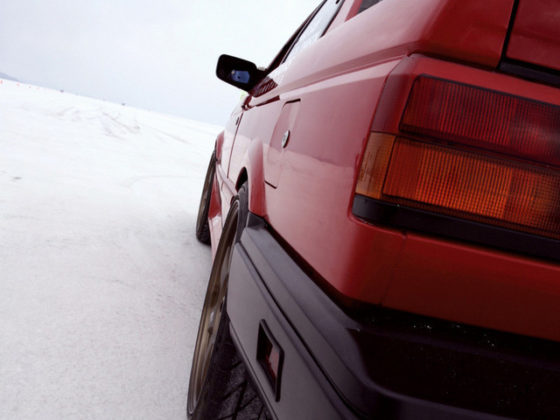Basics of Tire Pressure
By Annie Sam
Tires. Such a small portion of the car, yet it is the most important part of your vehicle. Why? Because it is the only part of the car that comes in contact with the road – or at least the only thing that's supposed to come in contact with the road. So critical is having the proper tire pressure for performance and safety at speed, we'll devote this next article on how to correctly set pressure for your car for optimal handling and safety.
Now that you've been on the road course – having dutifully taken my advice, you should be a pretty kick-ass driver, maybe even able to take out the top Performance Touring drivers (hehe). The more experience you have on the road course, the more alert you will become in feeling out the kinks and quirks your car may have. Don't worry –you'll develop these senses gradually with the more track time you have. Being aware of that fact, let's get down to the basics so you'll at lease know what to look for.

The Set Up
When driving on a racetrack you should run a higher tire pressure than you would normally run on the street. A higher pressure helps keep your tires from rolling over onto the sidewalls and destroying the outside corners of your tread under hard cornering. A tire inflated to a higher pressure will also run cooler at high speeds, important to avoid chunking and tread separation. The baseline hot tire pressure for most cars is usually from 38 to 45 PSI. Remember, running this pressure all the way around is a suggestion for FWD or 4WD cars. A RWD front-engined car usually has a little more pressure in the front wheels. A rear or mid-engine car usually likes more pressure in the rear wheels. When your tires are cold in the first session in the morning, you have to remember that your tires will heat up, increasing the pressure in the tires. Generally, the tire pressure at racing speed will increase about 1 PSI per 10 degrees of ambient temperature. So if it's an 80 degree day and you'd like your tires to be at 38 PSI hot, set the tires at 30 PSI cold. Check and adjust your tire pressures immediately after your run group while they are hot. This is very important for accurate adjustment. Now you will have your correct tire pressure for running.




3 comments
What is the actual relationship between grip and tire pressure? Some say that in order to increase grip you should decrease your tire pressure to increase the contact patch, but others say that in order to increase grip, you should increase your tire pressure (presumably to decrease your slip angle). When do I increase my tire pressure for more grip or decrease it for more grip and how does the race conditions change this (wet, gravel, snow, hot tarmac, etc.)? Any help is appreciated.
It really depends on the tire and the suspension.
For straight line acceleration lower pressure. For cornering grip the pressure vs grip relationship is negative parabolic with the pressure at the vertex being optimum. To increase grip you increase pressure if your current pressure is below optimum, conversely decrease pressure if your current pressure is above optimum. So before making adjustments, you have to first determine if you’re currently above or below optimum pressures. Find your optimum pressure using the methods described in the article (i. e., tread temps or marking sidewall).